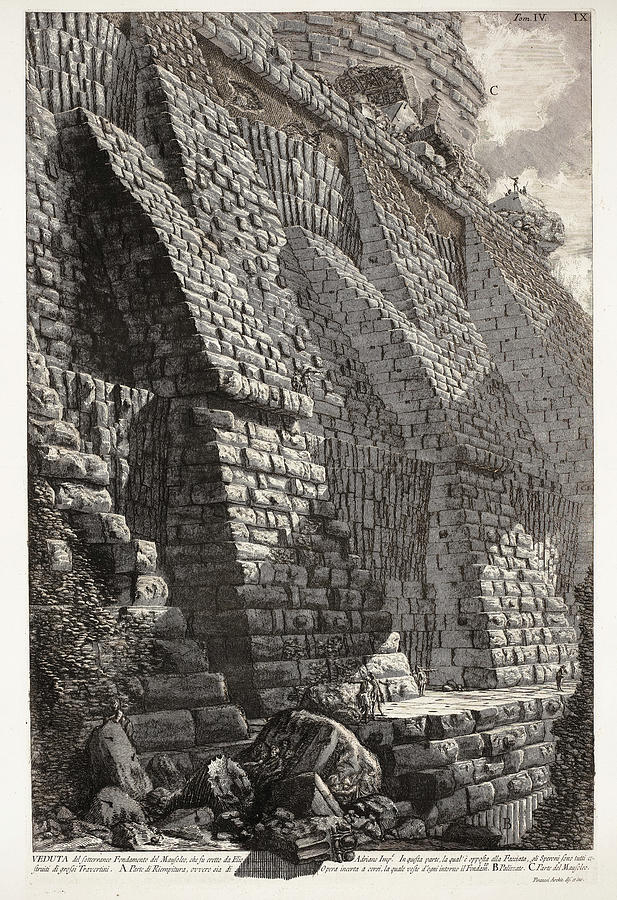

After his studies with Vasi, he collaborated with pupils of the French Academy in Rome to produce a series of vedute (views) of the city his first work was Prima parte di Architettura e Prospettive (1743), followed in 1745 by Varie Vedute di Roma Antica e Moderna.įrom 1743 to 1747 he sojourned mainly in Venice where, according to some sources, he frequented Giovanni Battista Tiepolo. He resided in the Palazzo Venezia and studied under Giuseppe Vasi, who introduced him to the art of etching and engraving. His brother Andrea introduced him to Latin and the ancient civilization, and later he studied as an architect under his uncle, Matteo Lucchesi, who was Magistrato delle Acque, a Venetian engineer who specialized in excavation.įrom 1740 he was in Rome with Marco Foscarini, the Venetian envoy to the Vatican.


The exhibition is curated by Heather Hyde Minor, professor, University of Notre Dame, and Carolyn Yerkes, associate professor, Princeton University. To make books, Piranesi had to think as a creator of prints, writer of texts, page designer, and printer-and sometimes as a publisher, dealer, and salesman. What did these volumes mean to him, who did they bring into his world, and how can the process of making them be understood throughout his career? This exhibition explores Piranesi’s books as the central thread that connects all spheres of his enormous ambition. Long, erudite, and sometimes convoluted, these texts were written with the help of humanist friends who supplied him with classical knowledge. More often than not, he combined his prints with letterpress texts. He etched and engraved copperplates, and sometimes he sold impressions from these as single sheets. This circumstance forced Piranesi to work and think collaboratively. Making images and making texts were two separate processes, discrete enterprises that required different printing equipment and skills. To make these books, Piranesi had to think in units of pages. The pages he crafted became his most powerful and creative art form. Over the course of his career, Piranesi created twelve volumes that combine printed text and images. Finding no opportunities to build, he began to make paper monuments in the form of books. Giovanni Battista Piranesi (1720–1778) was born in Venice and came to Rome in 1740, seeking to become an architect. 8, 2021.Ĭelebrating Princeton University’s collection of Piranesi works, the exhibition draws from the Library's Special Collections including Graphic Arts, Numismatic, and Rare Books the Marquand Library of Art and Archaeology and the Princeton University Art Museum. The exhibition also features a number of loans from national and international collections, including several works that will be on display for the first time. "Piranesi on the Page" tells the story of how Giovanni Battista Piranesi, the foremost printmaker in 18th-century Europe, made the book the center of his artistic production. The exhibition opened in the Ellen and Leonard Milberg Gallery, located in the Firestone Library lobby, on Oct. Reservations for public visitors are no longer required.Īll visitors must be fully vaccinated and wear face coverings. The exhibition is open daily from noon to 6 p.m.


 0 kommentar(er)
0 kommentar(er)
